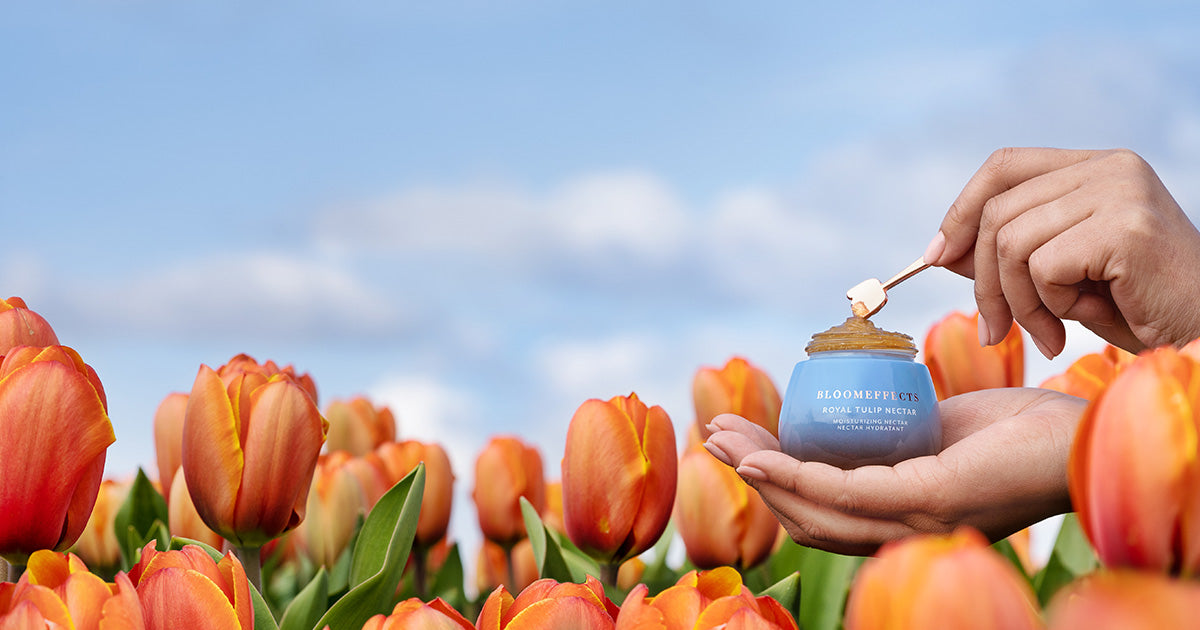Tulips are known all over the world as stunning flowers, prized for their captivating wealth of colors and numerous varieties. However, it is a little known fact that the tulip bulb and its flowers are edible. The tradition of eating tulip bulbs and petals was born out of Dutch pragmatism during times of famine in the last year of World War II.
During December of 1944-45, a freezing winter fell over the Netherlands that would last multiple months. Unlike other countries such as France, German troops still occupied the Netherlands and enforced strict food rationing and restrictions on farming as a form of punishing the Dutch public for the government’s non-compliance. The combination of a harsh, prolonged winter and limited food supply sent the country into severe famine known as the Hongerwinter (The Hunger Winter).

Photo source: https://en.wikipedia.org/wiki/Dutch_famine_of_1944%E2%80%9345#/media/File:BC856_HUI-2050.jpg
The Dutch government sought nutrient and energy-dense foods that were easily accessible and local. As tulip farming had stopped due to the war, there was a stockpile of unplanted tulip bulbs. Subsequently, Dutch authorities began selling bulbs in grocery stores and publishing recipes in local magazines in an effort to overcome the famine. Recipes included drying and milling the bulbs to make a flour for bread, tulip soup, and boiled tulips. Even Belgian actress and Hollywood icon, Audrey Hepburn, whose family had moved to the Netherlands during WWII, recounted eating tulips to survive.

Although the origins of eating tulips hark back to a dark time in history, today eating tulip bulbs and their flowers is a way of celebrating the harvest season. The tulips are a member of the allium family like hyacinths and garlic. The bulbs are described to have an onion-like flavor and the petals can taste like peas, cucumbers, or nothing depending on the tulip variety.
WARNING:
- Always make sure to use organic, unsprayed bulbs.
-
Remove the bitter, yellow core of the bulb as it is poisonous.
- Consult your doctor if you have any health concerns before consuming.

Photo source: https://cheekwood.org/bulb-basics/
We’ve drawn inspiration from well-known chef and owner of Café Caron in Amsterdam, Alain Caron, to create his tulip bulb salad. Celebrate the harvest season by indulging in the fruit (or should we saw bulb) of our Dutch tulip bulb farmers’ labor of love!

Photo source: https://binnenstebuiten.kro-ncrv.nl/recepten/tulpenbollen-recept
Recipe: Confit Tomato, Fennel, and Tulip Bulb Salad
Serving size: Serves 4 people as an appetizer
Ingredients:
Confit Tomatoes;
- 4 roma tomatoes
- 1 bay leaf
- 4 sprigs of thyme
- 4 garlic cloves, crushed and peeled
- ½ cup extra virgin olive oil
Tulip Bulbs;
- 15 edible young tulip bulbs
- ½ fennel bulb
- ½ cup dry white wine (e.g. sauvignon blanc)
Lemon Honey Vinaigrette;
- ½ lemon, juiced
- ¼ cup Extra Virgin Olive Oil
- 1 tsp Honey
Toppings;
- ¼ cup toasted and crushed almonds
- 6 tulips, petals picked and stems and stamen discarded
- Micro Herbs
Tomatoes Confit Preparation;
- For the tomato confit, with a paring knife score an “X” onto the bottom of the tomatoes.
- Bring a pot of salted water to the boil, blanch the scored tomatoes for 1 minute. Remove from the pot and place into a large bowl of iced water to cool and peel the tomatoes.
- Place the blanched tomatoes, garlic, thyme sprigs and bay leaf in a small baking dish. Season with salt, pepper and extra virgin olive oil and cook in an oven preheated to 300°F.
- Cook for 30 minutes, until they’re just tender. Remove from the oven and allow to cool.
Tulip Bulb Preparation;
- Remove roots and the skin like you would an onion.
- Cut in half and remove the yellow core. This is the poisonous part of the bulb!
- Cut the halves in half.
- Wash thoroughly to remove any dirt or grit.
Bulb and Fennel Saute Preparation;
- Cut the cleaned tulip bulbs in half. Then, thinly slice the fennel with a mandolin or knife to ⅛ inch thick slices.
- Heat a saucepan with olive oil over medium heat, once hot add a knob of butter and two sprigs of thyme to season the oil. Be careful the oil will splatter!
- Remove the fried thyme sprig, add the tulip bulbs and saute for 8-10 minutes until just cooked through (time will depend on size of tulip bulbs).
- Add ½ of the sliced fennel, season with salt and pepper, cook for 1 minute and then deglaze the pan with white wine. Reduce the white wine to half the original volume.
- Remove fennel and tulips from the pan with a slotted spoon.
Lemon Vinaigrette Preparation;
- To make the lemon honey vinaigrette, place olive oil, lemon juice, honey, salt, and pepper in a jar. Fasten the lid on and shake until a cloudy emulsion forms. Taste for seasoning.
Platting;
- To plate, first place a bed of crushed almonds, then place the confit tomato, tulip bulbs, cooked and raw fennel on top, garnish with tulip leaves and spoon over lemon vinaigrette to finish.
Last and final step, Enjoy! Eet smakelijk!


